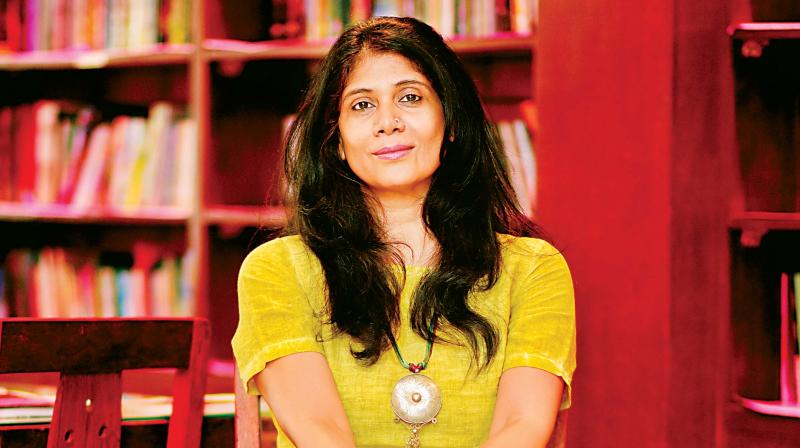Devil in the detail: How to tell a spooky tale
In today's changing urban setup, the stories that scare us have changed too.;

It was a chance conversation about horror fiction with Milee Aishwarya, the editor-in-chief at Penguin India, that led Shinie Antony to compile Boo, an anthology of short stories. Shashi Deshpande, Kanishk Tharoor, K.R. Meera, Jerry Pinto, Usha K.R., Jahnavi Barua, Manabendra Bandyopadhyay, Ipsita Roy Chakraverti, Jaishree Misra, Kiran Manral, Madhavi S. Mahadevan, Durjoy Datta and Antony have all tried their hand at scaring the daylights out of their readers - a mammoth task, in the age of information. What does it take, in a world inundated with information, to really send a shiver down someone's spine? Shinie Antony, writer, editor and founder of the Bangalore Literature Festival, tells Darshana Ramdev about how stories are always changing, the things that frighten us today might not affect us tomorrow but it's the psychological thrill that works everytime...
A book of horror stories is an unusual thing to find. What drew you to the genre?
Milee Aishwarya and I were discussing horror stories in general - I had written one already, which she read and liked. That’s how the idea came about but I wasn’t sure about writing all the stories myself. Different voices make a difference, so we decided to bring in other writers as well.Also, we were younger, we used to read - and be frightened by - a certain kind of tale. The folktales that originated from India had their own style and motifs, which were very different from what came in from the West. We had dark bungalows that were prone to power cuts, graveyards and local superstitions. In today's changing urban setup, the stories that scare us have changed too.
How would you describe this change?
The threshold is a lot higher for starters, there's a lot the writer needs to do to reach out and grab the reader. Today, in the age of the internet, everything is available at our fingertips. There's a lot to read, to know, to take in. It makes the writer's job that much more difficult. On the other hand, it has brought about a new interest in the genre - so it works both ways.
The writers you have on board haven't really dabbled with horror, apart from a couple of exceptions like Kiran Manral. Was this your original intention?
I wanted to look at modern writers, not necessarily the ones who specialised in horror. Everybody I approached seemed very excited - a couple of writers were skeptical but only because they hadn't tried this before. Newer writers talk about the horrors in society today and are able to pick up so many nuances - emotional scarring, mental trauma - in what is happening to women and to humankind at large. I thought that they would be the right people to give me a horror story.
Tell us a little about the stories in Boo...
They all deal with the paranormal! Monkeys in the Onion Field by Kanishk Tharoor is frightening, but in a sweet way. Jerry Pinto's In a Small Room, Somewhere is a very modern take on horror, it talks about the one thing that scares us most - I don't want to give anything more away! Ipsita Roy Chakraverti, who doesn't write fiction gave us The Daavan's Curse, based on something that actually happened to her. Mine is called Ghost No. 1 - it's about the very first ghost - what did he or she do? Who taught this person how to haunt?
In a world where perceptions are constantly evolving, now at a more rapid pace than ever before, what’s the trick to writing a good horror story?
Fear is a psychological thing and a good writer knows how to tap this. Satyajit Ray's short story The Indigo Terror springs to mind - he was a master of his craft. A really good horror story, I think, should have all the parameters of normalcy. I'm entering a house, opening the door - not really expecting anything untoward to happen. The trick, really, is to take something ordinary and use it to frighten the other person.

